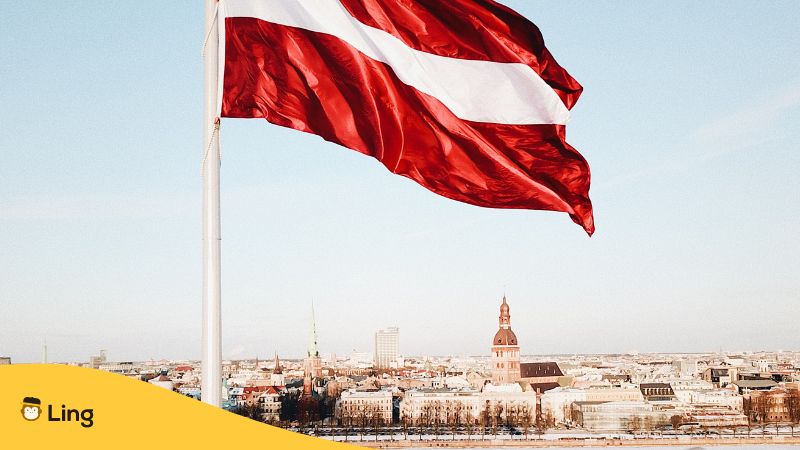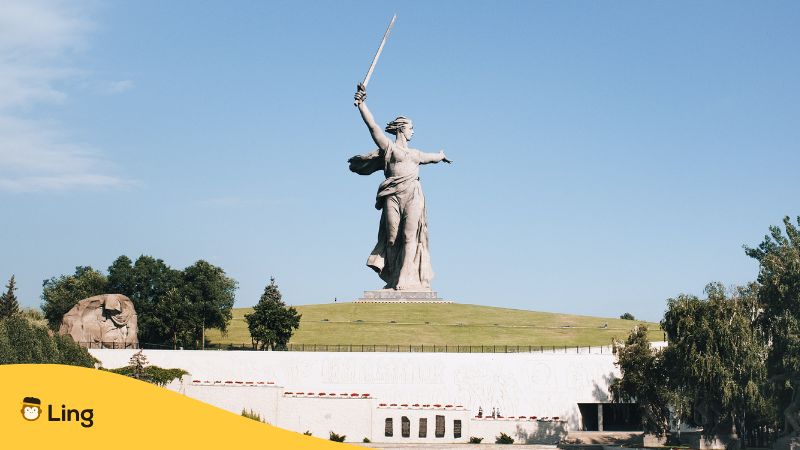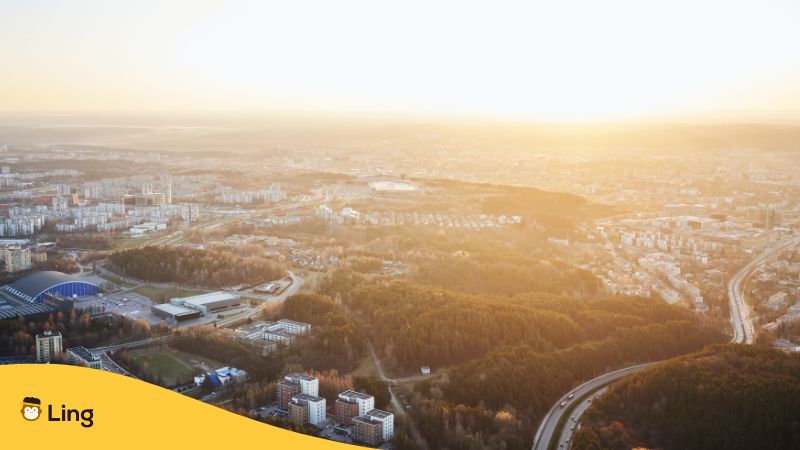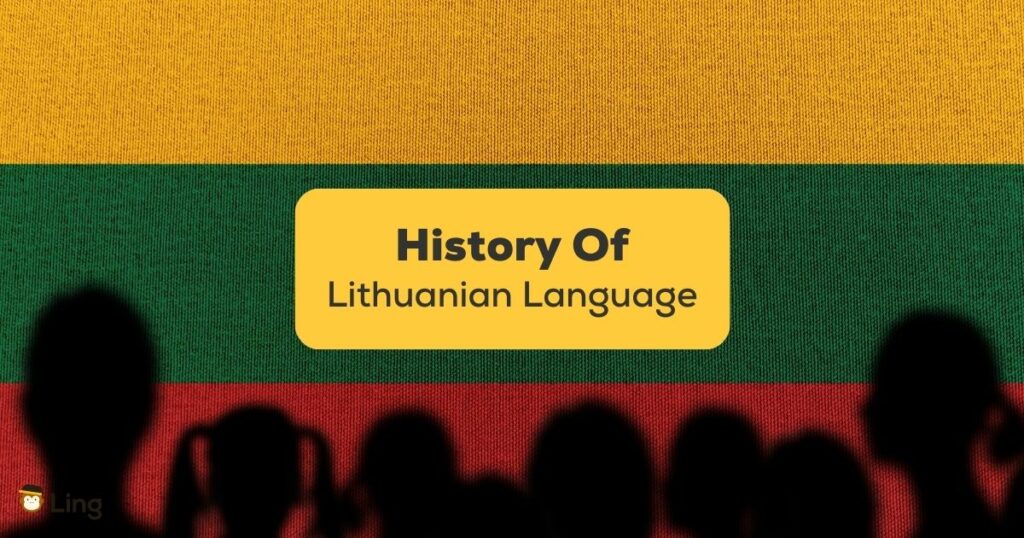Have you ever wondered about the linguistic history that lies hidden within the heart of Europe? The history of Lithuanian language, with interesting evolution, stands as one of the most fascinating language origin stories in the Baltics! From ancient roots to modern expressions, the Lithuanian language offers a unique and rewarding adventure for language enthusiasts.
Learn Lithuanian the best way! Take a scroll on the memory lane and learn about the history of the Lithuanian language for all my history nerds out there!
Tracing the Beginnings Of The History Of Lithuanian Language
The Lithuanian language stands as one of the oldest languages globally, preserving archaic features that have faded from other modern Indo-European languages. It’s believed to be around 5,000 years old! Wowza!
Interestingly enough, linguists have noted striking similarities between Lithuanian and ancient Sanskrit, suggesting shared ancestral roots. Lithuanian also shares its roots with ancient Greek and Latin, making it a linguistic cousin to many modern languages spoken today, like French or English.
Lithuanian’s Evolution Through Time And History
During the Proto-Balto-Slavic era, Lithuanian and Latvian branched off from their Baltic language relatives, making their own unique linguistic paths. Centuries of influences from Germanic, Slavic, and Nordic languages have shaped Lithuanian into a dynamic and diverse language.
The introduction of the printing press in the 16th century, arguably the first dialect’s most important invention ever, ushered in an era of standardized Lithuanian, making it more accessible to the country.

Anatomy Of The Lithuanian Language
Lithuanian showcases a fascinating array of grammatical cases, adding depth and nuance to its communication. Unique phonetic traits, like musical palatalization, give the spoken language a distinctive melodic quality. Nouns in Lithuanian evolve with gendered endings and diminutive forms.
Fun fact: The Lithuanian writing system, or the Lithuanian alphabet, which is inspired by the Gothic script, carries the legacy of medieval manuscripts and the timeless art of calligraphy that you can see in Lithuanian archives today (like Latin script)!
How Is Lithuanian Different From The Neighboring Latvian Language?
In the Baltic Region, Lithuanian and its closely related relative, Latvian, stand as two distinct threads. While both languages share a common ancestral root, they have evolved along divergent paths over the centuries.
One noticeable difference lies in their phonetic characteristics; Lithuania’s musical palatalization and distinct sounds set it apart from Latvian phonetic patterns. Grammar enthusiasts will uncover varying grammatical structures and cases in different languages, with Lithuanian exhibiting different forms and a more extensive and intricate case system.
Additionally, vocabulary, dialects, and word usage have deviated, with subtle nuances that reflect the cultural and historical contexts of each nation. These differences, while maintaining an air of familial resemblance, paint a vivid picture of the linguistic and cultural diversity that defines the Baltic region. You will find that many of the languages spoken in Lithuania today are similar to the languages spoken by its neighbors too.

A Struggle for Survival: Lithuanian And The Soviet Era
The tumultuous 20th century had a significant impact on the Lithuanian language. During the Russian empire, efforts were made to suppress local languages in favor of Russian.
Amidst the challenging times of Soviet rule, the Lithuanian language stood as a symbol of the nation’s enduring spirit and cultural identity. Despite the pressures to conform and adopt the dominant language, Lithuanians tenaciously clung to their linguistic heritage. Schools, families, and communities became strongholds of the language, passing it down from one generation to the next.
Even under the shadow of censorship and suppression, Lithuanian literature, music, and traditions persisted, serving as a testament to the unwavering dedication of the people. This remarkable resilience allowed the Lithuanian language to not only survive but thrive, emerging from the shadows of oppression with its identity intact.
Now, speaking about struggle, you don’t have to go through this phase when trying to speak Lithuanian! If you want more personalized and easy Lithuanian practice, download the language-learning Ling app today from the App Store and Play Store today!

The Modern Lithuanian Language’s Resilience In Europe
In the contemporary European landscape, the Lithuanian alphabet and language remain a captivating testament to the pride of the people. As Lithuania embraces its position in the European Union, the Lithuanian speakers continue to play a pivotal role in shaping the nation’s identity and international interactions.
With a new generation of language enthusiasts and digital platforms, the Lithuanian language is experiencing a digital renaissance, finding its place in the modern world without sacrificing its historical essence.
Despite the growing influence of English and other international languages, Lithuanian stands strong as other languages of the same language, a living link to the past and a vibrant cornerstone of Lithuania’s present and future. Its enduring presence serves as a reminder that languages, like stories, carry within them the essence of Lithuanian dialects, Lithuanian vernacular, and spoken Lithuanian from the surviving Baltic languages.
What Are The Interesting Facts About Lithuanian Language?
In conclusion, the history of the Lithuanian language is a story that spans millennia, weaving through the ancient Indo-European family, Gothic-inspired writing systems, and into the modern era! Learning Lithuanian not only connects you with a fascinating linguistic past but also immerses you in a vibrant present-day culture. So why not dive into this linguistic adventure and unravel the layers of the Lithuanian language?
Let’s also take a look at some interesting facts about the Lithuanian language:
- One of the oldest languages in the Indo-European languages
- Also one of the oldest in the Baltic languages
- Today, many English words are adopted in Lithuanian
- Lithuanian and Sanskrit have conjugate words/words that are similar
- Some Lithuanian dialects are Aukštaičių and Žemaičių
Embrace the Adventure of Learning Lithuanian With Ling!
If you’re finding Lithuanian a niche language with not many official language resources, then Ling will be your best friend!
It is a highly researched app meant for a fun and personalized foreign language re-learning experience. Aside from Lithuanian, there are over 60+ foreign languages to learn on Ling. Interactive puzzles, sound features, and daily goals are embedded to help you speak Lithuanian. Download it today!
































































